Pallet Inverter Safety Tips for Mexico Plants Facing Border Trade Packaging Compliance and Traceability
Running a steel mill in Mexico is a tough business. I know this because I've spent my entire life in the packaging machine industry, helping leaders like you solve complex problems. You're constantly dealing with fluctuating energy costs, aging equipment, and strict environmental rules. On top of that, you have the pressure of cross-border trade, especially with the US. A simple wooden pallet can cause a shipment to be rejected, costing you thousands of dollars and damaging your reputation. It's a problem that keeps you up at night, wondering if every "t" is crossed and every "i" is dotted for compliance.
The safest way to manage pallet inverter operations for Mexico's cross-border trade is to combine robust machine safety features with a comprehensive operator training program. This approach directly addresses packaging compliance, like ISPM 15, by enabling the quick and secure exchange of domestic pallets for certified export pallets. It also enhances traceability by creating a specific, controllable point in the logistics chain where pallet data is updated, ensuring every load meets international standards before it leaves your plant.
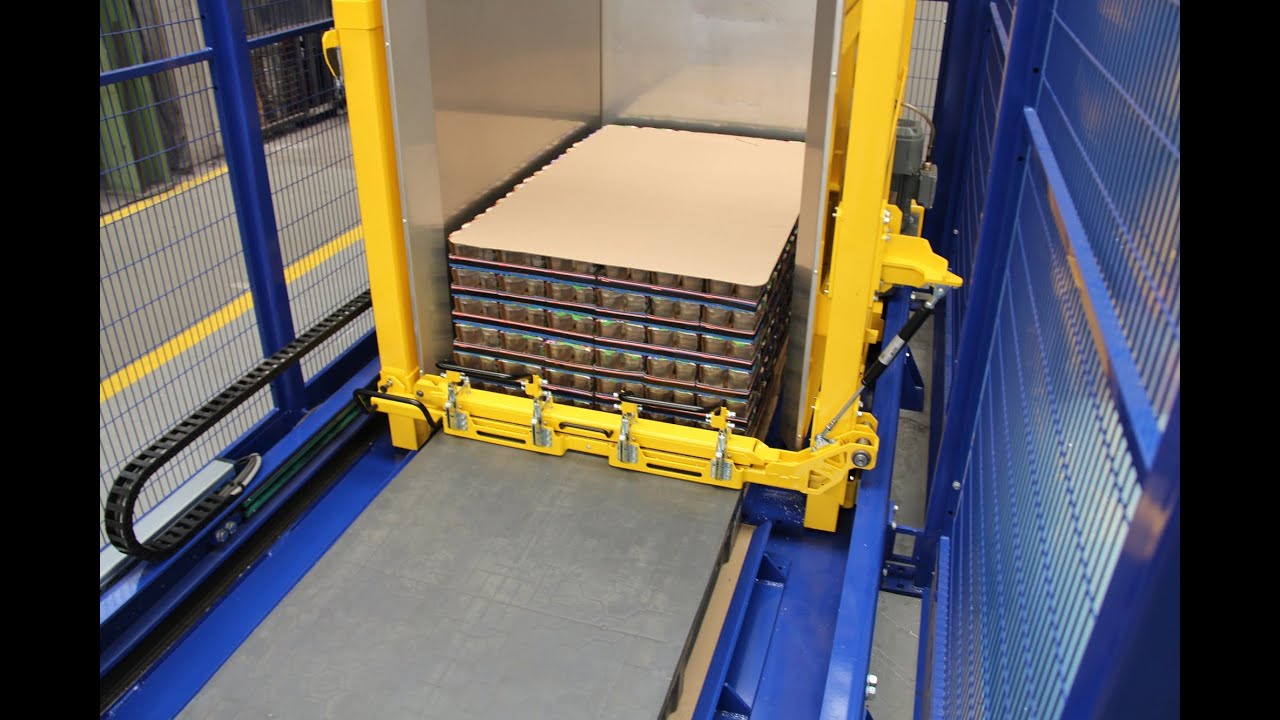
I've seen firsthand how a single, seemingly small issue like a non-compliant pallet can snowball into a major logistical nightmare. But I've also seen how smart investments in the right equipment can turn these challenges into competitive advantages. A pallet inverter isn't just a piece of machinery; it's a gateway. It’s the critical control point where you ensure your products, packed with care in your facility, are ready for the global market. In this article, I want to share my experience, not just as a machine builder, but as an engineer who has helped businesses streamline this exact process. We will explore how to make your pallet inverter operations not just compliant, but incredibly safe and efficient, giving you one less thing to worry about.
How can a pallet inverter directly address US-Mexico border trade compliance?
You have a shipment of high-quality steel products ready to go. Your team has worked hard to produce it on time and on budget. But it's sitting on a standard wooden pallet, the kind you use all over your plant. You know that if you send it across the border to the US like that, it could be stopped, inspected, and rejected. The reason is often ISPM 15, a regulation requiring wood packaging to be heat-treated to prevent the spread of pests. This single compliance issue can cause massive delays, fines, and frustrated customers. It’s a constant headache that disrupts your otherwise efficient operation.
A pallet inverter is your most direct solution to this problem. It allows you to build and move your product loads on cost-effective, internal-use pallets throughout your production process. Then, at the final stage before shipping, the pallet inverter safely grips the entire load, rotates it, and allows your team to easily swap the domestic pallet for a fully compliant, ISPM 15-stamped export pallet or a plastic pallet. This simple, controlled exchange at the point of dispatch eliminates the risk of non-compliance entirely. It transforms a major potential bottleneck into a streamlined, predictable part of your workflow.
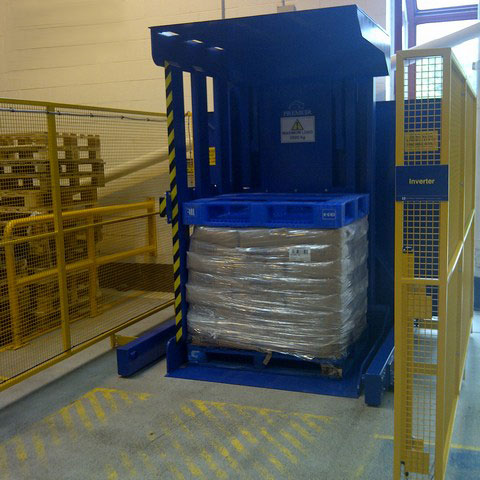
Dive Deeper: From Plant Floor to Border Crossing
When I first started my factory, I thought building a good machine was all that mattered. But soon, I realized my clients weren't just buying steel and motors; they were buying solutions to their business problems. For many of my partners in Mexico, the biggest problem was the US border. Let's break down exactly how a pallet inverter becomes a critical tool for this.
The ISPM 15 Challenge Explained
ISPM 15 is an international standard for phytosanitary measures. Its goal is to prevent the international transport of diseases and insects that could negatively affect plants or ecosystems. For wood packaging material (WPM) like pallets, this means the wood must be debarked and then heat-treated (HT) or fumigated with methyl bromide (MB). The pallet must then be stamped with a special mark of compliance. US customs officials are extremely strict about this. Any shipment arriving on unmarked or improperly treated wood pallets can be refused entry. For a steel mill owner like yourself, this means your product could be stuck at the border, incurring daily storage fees, until you arrange for it to be re-palletized, which is a logistical and financial nightmare.
The Pallet Inverter as a Strategic Gateway
Instead of using expensive, treated export pallets for your entire internal operation, you can use a more strategic approach. This is where the pallet inverter shines.
- Internal Logistics: You use standard, low-cost wooden or durable plastic pallets for all internal movements—from the production line to the warehouse. This keeps your operational costs down.
- The Exchange Point: At your shipping dock, you create a dedicated "export-ready" station with a pallet inverter. The forklift brings a finished load on an internal pallet to the inverter.
- The Swap: The inverter clamps the load, rotates it 180 degrees, and rests it on its top. The original internal pallet is now on top and can be easily removed. A new, compliant export pallet (either ISPM 15 stamped wood or plastic) is placed on the load.
- Completion: The machine rotates back 180 degrees. The load is now on a compliant pallet, ready for immediate loading onto a truck for export.
This process takes only a few minutes and turns compliance from a factory-wide concern into a simple, final-step check.
Comparing Your Pallet Options
Choosing the right export pallet is a key part of the strategy. A pallet inverter gives you the flexibility to choose the best option for each shipment.
| Pallet Type | Compliance with ISPM 15 | Cost | Durability & Reusability | Key Consideration for Mexico-US Trade |
|---|---|---|---|---|
| Heat-Treated (HT) Wood | Yes, must have official stamp. | Low to Medium | Low to Medium | Most common and cost-effective for one-way export shipments. |
| Plastic Pallets | Exempt from ISPM 15. | High | High | Excellent for closed-loop systems with customers who return pallets. Eliminates all wood-related pest risks. |
| Presswood Pallets | Exempt from ISPM 15. | Low | Low (often single-use) | A lightweight, nestable, and compliant alternative to traditional wood. Good for saving space and weight. |
By using a pallet inverter, you are not just swapping pallets. You are installing a final quality and compliance gate that protects your revenue and your relationship with your international customers. It's a pragmatic, engineering-driven solution to a costly business problem.
What are the most overlooked safety risks when operating a pallet inverter?
Many plant managers focus on the obvious dangers: the large moving parts, the heavy loads. They install light curtains and safety cages, which is a great start. But then, accidents still happen. An operator reaches into the machine to adjust a slipped load, forgetting to power it down completely. A maintenance worker gets a hydraulic fluid burn during a routine check. These incidents often occur not because of major machine failure, but because of a lapse in procedure or an underestimation of less-obvious risks. The real danger lies in complacency and the small, overlooked details of daily operation.
The most overlooked safety risks with pallet inverters are related to improper lockout/tagout (LOTO) procedures, hydraulic system maintenance, and operator overconfidence. While a safety cage prevents entry during a cycle, operators may be tempted to bypass protocols for a "quick fix," leading to severe crush or pinch injuries. Similarly, high-pressure hydraulic leaks can cause injection injuries that are far more serious than a simple burn or cut. These non-obvious risks require dedicated training and strict procedural discipline, not just passive safety hardware.
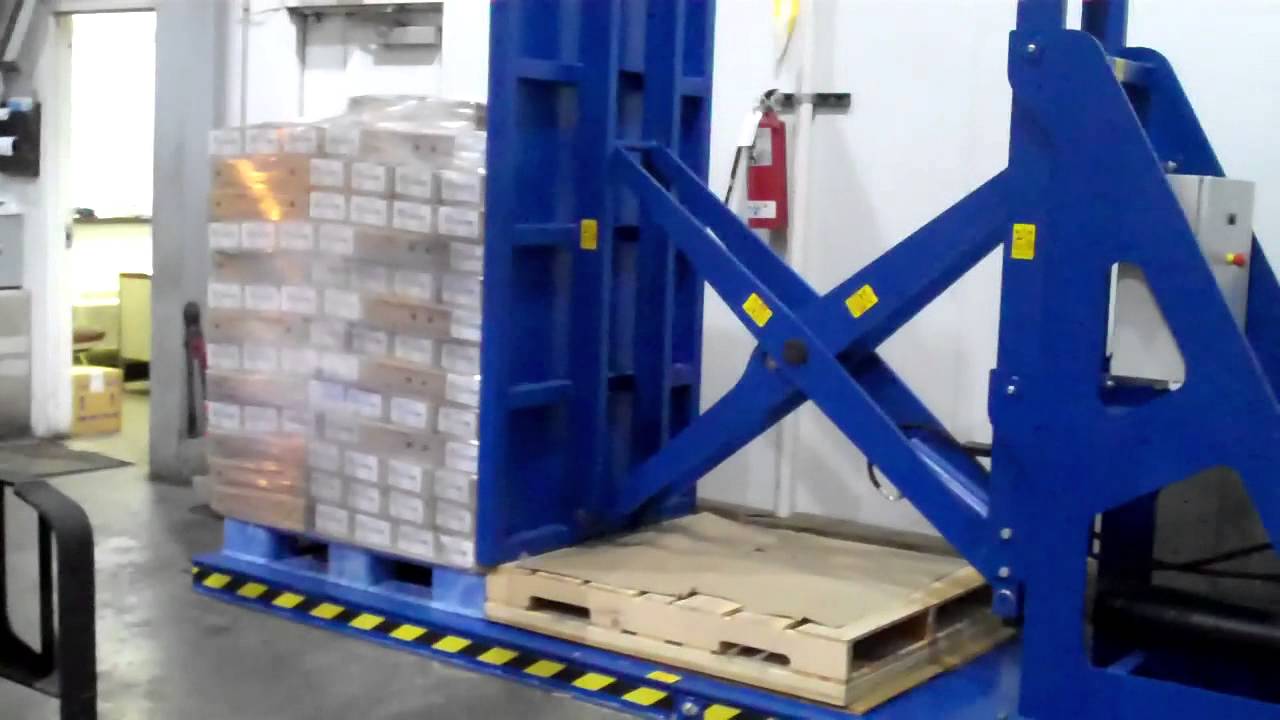
Dive Deeper: Beyond the Safety Cage
In my years visiting factories, I've seen the best and worst of safety practices. The safest plants are not necessarily the ones with the newest machines, but the ones with the most rigorous safety culture. They understand that a safety feature is only as good as the procedure that supports it. A pallet inverter is a powerful tool, and like any powerful tool, it demands respect and a deep understanding of all its potential hazards, not just the most visible ones.
The "Invisible" Danger of Stored Energy
A pallet inverter doesn't just stop being dangerous when the cycle ends. It contains stored energy.
- Hydraulic Systems: These systems operate under immense pressure. A pinhole leak can release fluid at a velocity high enough to penetrate skin and cause a severe medical emergency. Maintenance crews must be trained to properly de-pressurize the system before ever loosening a fitting.
- Electrical Systems: A proper Lockout/Tagout (LOTO) procedure is non-negotiable. This means not just hitting the emergency stop button, but physically disconnecting the main power source and locking it out with a designated lock. I once investigated an incident where an operator was injured because a second person restarted the machine, not realizing someone was performing a minor adjustment inside. A simple lock would have prevented it.
- Gravitational Energy: A heavy load held by the clamps is a source of potential energy. A hydraulic failure or improper clamping could cause the load to drop unexpectedly. Operators must be trained to never stand under a suspended load, even for a moment.
Operational Complacency: The Human Factor
After an operator has performed a task hundreds of time, they can become complacent. This is where procedural drift happens, and it's a huge risk.
- Bypassing Safety Interlocks: An operator trying to save a few seconds might try to defeat a door interlock or reach around a light curtain. This is one of the most common causes of serious injury.
- Improper Load Centering: Rushing the job can lead to an off-center load. This puts uneven stress on the machine's structure and clamping mechanism. It can lead to the load shifting or falling during rotation, creating a dangerous situation.
- "Clearing Jams" Manually: If a piece of dunnage or a broken board gets stuck, the temptation is to reach in and pull it out. The only safe way to do this is with a full LOTO procedure.
Here is a breakdown of risks that every plant manager should be thinking about:
| Risk Category | Commonly Known Risk | Often Overlooked Risk | Mitigation Strategy |
|---|---|---|---|
| Mechanical | Crush/Pinch points during rotation. | Component fatigue from overloading. | Install physical guards and light curtains. Implement strict load capacity limits and regular NDT (non-destructive testing) on critical welds. |
| Hydraulic | Obvious hose ruptures. | High-pressure fluid injection from pinhole leaks. | Daily visual inspection for leaks. Mandate proper de-pressurization before maintenance. Use appropriate PPE (gloves, safety glasses). |
| Electrical | Electric shock from exposed wires. | Accidental restart during maintenance. | Insulate all electrical components. Enforce a strict, one-person-one-lock LOTO procedure for ALL service tasks. |
| Operational | Operator standing too close. | Operator complacency leading to unsafe shortcuts. | Use floor markings for safe zones. Conduct regular, unannounced safety audits and refresher training to combat procedural drift. |
Safety is not a one-time installation. It's a continuous process of training, observation, and improvement. Recognizing and planning for these overlooked risks is what separates a good safety program from a great one.
How do you integrate pallet inverter operations with your existing traceability system?
Your steel coils or wire products have a birth certificate. From the moment they are created, they are tracked. You know their grade, their weight, their production date. This data is vital for quality control and for your customers. But when that product gets to the shipping dock, a critical event happens: it's moved to a new pallet for export. If you don't track this change properly, you create a blind spot in your data chain. A customer might receive a shipment and scan the pallet ID, but your system won't know which product is on it. This breaks the chain of custody and traceability that is so important for modern manufacturing.
You integrate a pallet inverter with your traceability system by treating the pallet swap as a key data transaction. The best practice is to equip the inverter station with a barcode scanner. The operator first scans the product's unique identifier (on the coil, wrap, or tag). Next, they scan the barcode of the new, compliant export pallet. The inverter's control system (PLC) then sends this data pair—product ID and new pallet ID—along with a timestamp to your central Warehouse Management System (WMS) or MES. This creates a digital "marriage" of the product to its new carrier, ensuring seamless traceability across the border.
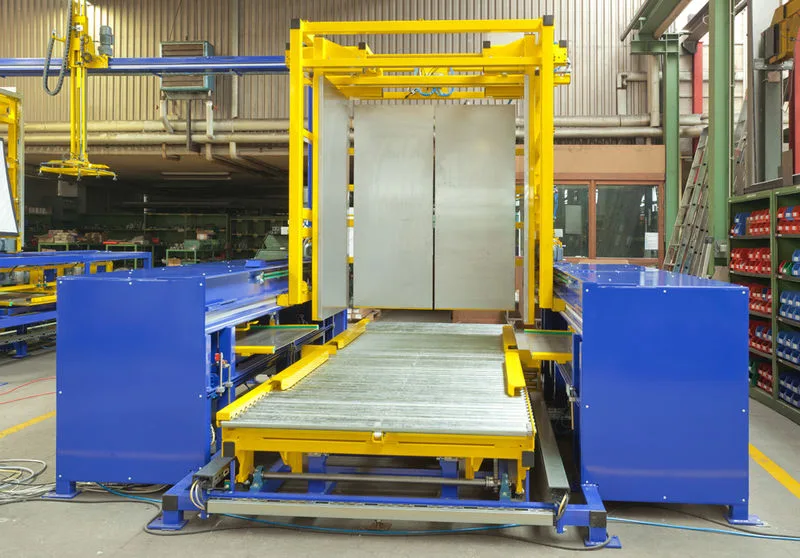
Dive Deeper: Closing the Traceability Loop
For a business leader like you, data is as important as the steel you produce. It drives efficiency, ensures quality, and provides the proof of compliance your customers demand. A pallet inverter, when viewed correctly, is not just a material handling device; it's a data collection terminal. Let's explore how to make this integration a reality in your plant.
The "Digital Handshake"
The core concept is to create a "digital handshake" at the moment of the pallet swap. This is where the identity of the product is formally passed to the identity of its new shipping platform. This event must be captured accurately and automatically if possible.
- Inputs: The system needs two key pieces of information: the Product ID and the new Pallet ID. These are typically captured via handheld or fixed-mount barcode scanners.
- The Event: The pallet inversion cycle itself acts as the trigger. The machine's PLC can be programmed to send the data packet only after a successful cycle is completed.
- The Output: The PLC sends a data string to your higher-level system. This string might look something like this:
[Timestamp],[Product_ID],[Old_Pallet_ID],[New_Pallet_ID],[Operator_ID],[Machine_ID].
This simple data transaction closes a critical information gap and provides an auditable record of exactly when and how the product was prepared for export.
Integration with MES and WMS
Your Manufacturing Execution System (MES) and Warehouse Management System (WMS) are the brains of your operation. The pallet inverter must talk to them.
- MES (Manufacturing Execution System): Integrating with the MES allows you to track finished goods right up to the point of palletization for export. It can verify that the product being loaded is indeed cleared by quality control and is ready for shipment.
- WMS (Warehouse Management System): This is the most common integration point. When the WMS receives the data from the inverter, it updates its inventory record. It now knows that
Product_SKU_123is no longer onInternal_Pallet_456, but is now onExport_Pallet_XYZ. When the truck is loaded, the shipping documents generated by the WMS will be perfectly accurate.
This table shows the key data points you should aim to capture during the pallet inversion process to ensure robust traceability.
| Data Point | Why It's Important | How to Capture It |
|---|---|---|
| Product ID | The unique identifier for the goods on the pallet. This is the core of traceability. | Barcode scan of the product label or tag. |
| New Pallet ID | The unique identifier of the compliant export pallet. | Barcode scan of the new pallet's label (e.g., SSCC label). |
| Timestamp | Provides an auditable record of when the transfer occurred. | Automatically generated by the PLC/control system. |
| Operator ID | For accountability and performance tracking. | Operator logs in to the terminal or scans their ID badge. |
| Machine ID | Important for maintenance and troubleshooting if you have multiple inverters. | Pre-configured in the machine's control system. |
| Load Weight | Can be used for quality control and to ensure it matches the bill of lading. | Captured via integrated floor scales or load cells on the inverter itself. |
By implementing this, you transform a simple material handling task into a value-added step in your information supply chain. This level of detail not only satisfies border compliance but also provides immense value to your customers and your own quality assurance teams.
What kind of training program is essential for safe and efficient pallet inverter use?
You invest a significant amount of capital in a new piece of equipment like a pallet inverter. You do this to solve problems and improve your bottom line. But often, the machine is installed, and operators are given a quick 30-minute rundown by the installation crew. Then, everyone is left to figure things out on their own. This leads to inefficient use, bad habits forming, and, worst of all, safety incidents. The machine's true potential is never realized, and it can even become a source of new problems.
An essential training program for a pallet inverter must be a multi-level process, not a single event. It should start with Foundational Operator Training covering daily operation, safety features, and emergency procedures. This must be followed by Certified Operator Training for experienced users, which includes minor troubleshooting and jam-clearing. Finally, a separate Maintenance Training track is crucial for your technical staff, focusing on lockout/tagout (LOTO), hydraulic systems, and preventive maintenance schedules. This structured approach ensures that every person interacting with the machine has the exact knowledge they need for their specific role.
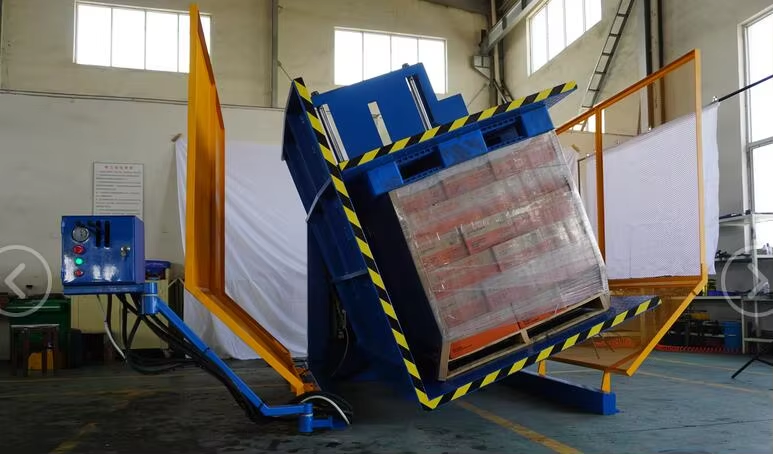
Dive Deeper: Building Competence and Confidence
From my own journey starting as an engineer on the factory floor, I learned one thing for certain: a well-trained operator is more valuable than any single feature on a machine. Training is not an expense; it is a direct investment in uptime, safety, and efficiency. A confident operator who understands the "why" behind the procedures will run the machine faster, safer, and will be able to spot small problems before they become big ones. Let's design a robust training program that will deliver real returns for your plant.
Level 1: Foundational Operator Training (All Users)
This is the mandatory starting point for anyone who will operate the machine. The goal is safety and basic competence.
- Classroom Session (1-2 hours):
- Explain the machine's purpose: Why are we using it? (Compliance, efficiency).
- Review all safety features: Guards, light curtains, E-stops, warning labels.
- Walk through the Standard Operating Procedure (SOP) for a normal cycle.
- Emergency procedures: What to do in case of a jam, power failure, or injury.
- Hands-On Session (1-2 hours):
- Supervised operation with empty pallets.
- Supervised operation with non-critical test loads.
- Each operator must demonstrate proficiency in starting, running a full cycle, and stopping the machine correctly.
Level 2: Certified Operator Training (Lead Operators/Supervisors)
This level is for the team members who will be the first line of response for minor issues.
- Advanced Classroom Session (2 hours):
- Interpreting error codes and warning lights on the control panel.
- SOP for clearing common, non-mechanical jams (e.g., a slipped piece of cardboard).
- Understanding the limits of their role: When to fix it vs. when to call maintenance.
- Practical Scenarios (2 hours):
- Simulate common error codes and have the operator troubleshoot them.
- Practice the SOP for clearing a minor jam, with a supervisor's approval.
- Demonstrate correct communication when escalating a problem to the maintenance team.
Level 3: Maintenance Training (Technicians/Engineers)
This is a highly technical track for the people who will keep the machine running.
- In-Depth Technical Review (4-8 hours):
- Detailed study of electrical and hydraulic schematics.
- Hands-on training on the full Lockout/Tagout/Tagout (LOTO) procedure specific to the inverter.
- Preventive Maintenance (PM) schedule: What to check daily, weekly, and monthly.
- Procedure for hydraulic fluid checks, filter changes, and pressure adjustments.
- Sensor calibration and electrical component replacement.
Here is a sample curriculum outline you can adapt for your plant:
| Module | Topic | Target Audience | Learning Objective |
|---|---|---|---|
| M1: Safety First | Machine Hazards, PPE, E-Stops, LOTO introduction | All Users | Understand and respect all safety systems and procedures. |
| M2: Basic Operation | Control Panel, Loading/Unloading, Normal Cycle | Foundational Operators | Safely and efficiently operate the machine for standard tasks. |
| M3: Problem Solving | Error Codes, Minor Jam Clearing | Certified Operators | Handle common operational issues without needing maintenance for every stop. |
| M4: Mechanical PM | Lubrication, Inspections, Bolt Tightening | Maintenance Team | Perform scheduled mechanical preventive maintenance to maximize uptime. |
| M5: Systems PM | Hydraulic & Electrical Checks, LOTO Mastery | Maintenance Team | Safely service the core power and control systems of the machine. |
A documented training program, complete with certifications for each level, creates a culture of professionalism and safety. It ensures your investment is protected and your people are kept safe.
Conclusion
In short, integrating a pallet inverter with robust safety, training, and data systems transforms it from a machine into a strategic asset for your cross-border operations and overall plant efficiency.




